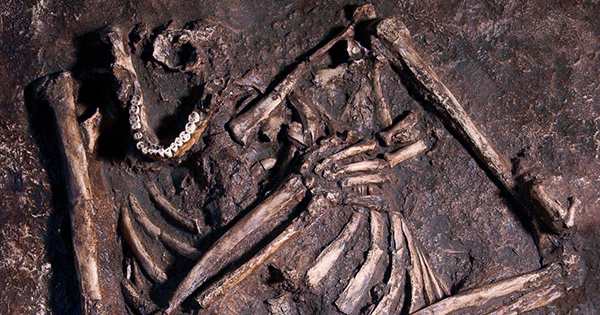The earliest remains of the mysterious Denisovans, an ancient hominid branch considered to be closely linked to modern humans, have been discovered by researchers, the 200,000-year-old bone pieces discovered in a layer of silt that also contained slaughtered animal bones and stone tools, offering insight into our long-gone ancestors’ habits.
While little known about this fascinating ancient hominid, the recent finding of Denisovan DNA in the genomes of indigenous peoples in Southeast Asia and Oceania suggests that the species was previously ubiquitous in the region and that interbreeding with contemporary humans was common. Only six Denisovan fossils have ever discovered before, five of which discovered in the Denisova Cave in Siberia and the sixth in the Baishiya Karst Cave in China.
Researchers detail how they filtered through 3,791 bone pieces in the Denisova Cave, three of which recognized as Denisovan remains based on mitochondrial DNA, in a new study published in the journal Nature Ecology & Evolution. A third specimen was found to be that of a Neanderthal, whose DNA revealed indications of interbreeding between the two extinct species between 200,000 and 250,000 years ago.
The oldest known Denisovan bones were previously determined to be between 122,000 and 194,000 years old. The researchers’ fossils, on the other hand discovered in a layer of silt that dates back 200,000 years, making them the oldest Denisovan bones yet discovered.

The chopped remains of a variety of animal species also found on the same stratum, allowing the researchers to begin putting together the Denisovan diet, Deer, horse, bison, gazelle, and woolly rhinoceros all appear to have been on the menu, indicating that our ancestors were experienced hunters.
The discovery of stone utensils in the same sediment layer is significant since it is the first direct proof that Denisovans made and utilized tools. The study authors believe that these artifacts most likely employed for “animal skin processing activities, such as scraping, cutting, and/or sawing,” based on their form and the fact that they were covered with fatty residues.
According to the experts, implements of this sort are totally missing from the archaeological records for this time in North and Central Asia. However, identical items dating from 250,000 to 400,000 years old have discovered at a location in Israel. Finally, the research authors mention the existence of wolves and wild dogs among the cave is other carnivorous occupants. They speculate that Denisovans and other early humans “may have been actively battling with these predators for resources and potentially the cave itself” based on this discovery. Cave living does not appear to be a pleasant one.
















